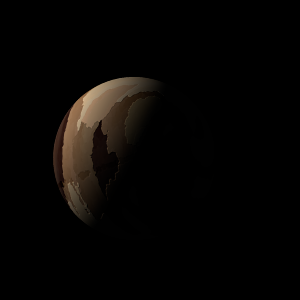|
|
Space Astro
|
Info for exoplanet "Lobydax"
| Scientific (actual) data |
|---|
| Name | Kepler-111 b |
| Planet status | Confirmed |
| Radius | 0.141 |
| Orbital period | 3.34181 |
| Semi major axis | 0.046 |
| Discovered | 2014 |
| Updated | 2021-02-05 |
| Tconj | 2454970 |
| Impact parameter | 0.01 |
| Publication | Announced on a website |
| Detection type | Primary Transit |
| Alternate names | 2MASS J19263676+4441177 b, K00139.02, KIC 8559644 b, KOI-139 b, KOI-139.02, WISE J192636.76+444117.7 b |
| Star name | Kepler-111 |
| Right ascension | 291.65° |
| Declination | 44.69° |
| Mag j | 12.412 |
| Mag h | 12.111 |
| Mag k | 12.11 |
| Star distance | 669.92 |
| Star metallicity | 0.005 |
| Star radius | 1.16 |
| Star temperature | 5952 |
| Star alternate names | 2MASS J19263676+4441177, KIC 8559644, KOI-139, WISE J192636.76+444117.7 |
| Wikipedia article | Kepler-111 b |
Back
| |
| Fictional info (?) |
|---|
| Suggested name | Lobydax |
| Planet type | Hot planet |
|
| Atmosphere | Xenon | 99% |
| Atmospheric pressure | 30 bar |
 |
| Moon | Supu-zoho Jesam | Very small round gaseous planetoid |
| Google search for Lobydax |
|
Website by Joachim Michaelis
|
|
|
|